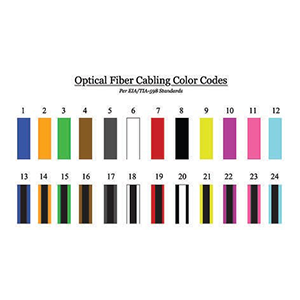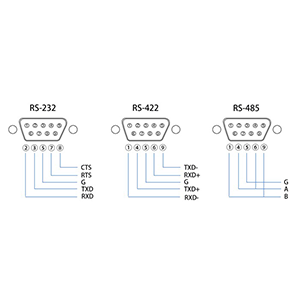Hello everyone! We believe that fiber optic network color coding has brought many benefits to your digital transformation in terms of promoting network cabling management and improving operation and maintenance efficiency. Today I am honored to give you an in-depth explanation of the connotation and application of the 24-core optical fiber color coding standard. As a standardized solution focused on improving the manageability of optical fiber networks, the 24-core encoding system plays a key role in data centers, telecommunications networks and even building cabling.
Overview of 24-core fiber color coding
Let me give you an overview of the color coding of 24-core optical fiber:
Definition of 24-core optical fiber color coding standard:
- The 24-core optical fiber color coding standard is an industry-wide optical fiber core identification solution.
- It stipulates the specific color combinations that should be used for 24 optical fiber cores, forming a complete coding system.
- This standard was developed by the optical fiber communications industry organization to improve the manageability of optical fiber network cabling.
The role of 24-core coding standards in optical fiber network management:
- Improve the identification and traceability of fiber optic cabling and facilitate management and maintenance.
- Reduce the error rate of optical fiber connections and equipment connections, and improve operation and maintenance efficiency.
- It is conducive to the planning and allocation of optical fiber resources and supports intelligent network management.
- Provides a basis for orderly deployment and rapid troubleshooting of optical fiber networks.
Design ideas of 24-core encoding system:
- The design of color sequence follows certain regularity and hierarchy.
- Uses 12 basic colors with different color ribbons for combined coding.
- The coding logic is clear, making it easy to remember and identify different optical fiber channels.
- The overall design takes into account fiber quantity expansion and management flexibility.
The 24-core optical fiber color coding standard is an important achievement in the optical fiber communications industry. It provides an effective identification and traceability basis for standardized cabling management of optical fiber networks, and plays an important role in improving network operation and maintenance efficiency and reducing error probability. The design idea of this coding system also reflects the industry’s emphasis on intelligent management of optical fiber networks.
Details of 24-core optical fiber color coding
Let me introduce to you in detail the specific content and application value of 24-core optical fiber color coding:
24-core optical fiber color coding corresponding color sequence:
- Core 1: Blue
- Core 2: Orange
- Core 3: Green
- No. 4 core wire: brown
- No. 5 core wire: gray
- No. 6 Core Wire: White
- No. 7 core wire: red
- No. 8 core wire: black
- No. 9 core wire: yellow
- No. 10 core wire: Purple
- No. 11 core wire: pink
- No. 12 core wire: turquoise
- 13-24 core wire: the above 12 colors + ribbon (white, black, red, yellow)
The fiber types or uses represented by each color:
- Blue, orange, green, and brown: represent single-mode optical fiber
- Gray and white: represent multi-mode optical fiber
- Red and black: represent optical fibers with special purposes, such as protection or reserved channels
- Other colors: used to expand and distinguish different fiber channels
- The use of ribbons: further distinguish different optical fiber groups or channels
The application value of color coding in optical fiber identification and classification:
- Intuitive identification of different optical fiber cores improves the visibility of optical fiber wiring.
- By encoding logic, the type and purpose of the optical fiber can be quickly inferred.
- Conducive to the planning and management of optical fiber resources and rapid fault location.
- Supports visual management of optical fiber networks and improves operation and maintenance efficiency.
- Laid the foundation for intelligent management of optical fiber networks.
In short, the 24-core optical fiber color coding system provides an important basis for the orderly deployment and efficient management of optical fiber networks. Through the intuitive identification and coding logic of color, the recognizability and traceability of optical fiber resources are greatly improved, which is the key foundation for promoting intelligent management of optical fiber networks.
Application scenarios of 24-core optical fiber color coding
Let me introduce to you how 24-core optical fiber color coding is reflected in different optical fiber network application scenarios, and its important role in improving network manageability.
Application of 24-core encoding in data center optical fiber networks:
- Data centers have high requirements for fiber density and cabling management.
- 24-core encoding helps to quickly identify different fiber channels and improve operation and maintenance efficiency.
- Color-coded visual presentation facilitates fiber resource planning and fault location.
Application of 24-core coding in telecommunications backbone optical networks:
- The optical fiber resource scheduling and management requirements of telecommunications networks are relatively complex.
- The 24-core coding system can help telecom operators better manage and control optical fiber resources.
- Uniform coding standards are conducive to interconnection between different networks.
Application of 24-core coding in building optical fiber cabling:
- The requirements for optical fiber resource management within buildings are relatively scattered and complex.
- 24-core encoding helps quickly identify fiber channels in different business units.
- It can provide a foundation for intelligent management and maintenance of building optical networks.
The importance of 24-core encoding in improving the manageability of optical fiber networks:
- Standardized color coding improves the visual presentation of optical fiber resources.
- Clear coding logic reduces the error rate of optical fiber connection and equipment connection.
- Conducive to reasonable planning and dynamic scheduling of optical fiber resources and improving network utilization.
- Lay the foundation for intelligent management and automated operation and maintenance of optical fiber networks.
Therefore, the 24-core optical fiber color coding system is a common industry standard and plays an important role in different types of optical fiber networks. By improving the identifiability and traceability of optical fiber resources, it greatly improves the manageability of optical fiber networks and becomes a key foundation for promoting the intelligent development of optical networks.
Standard implementation of 24-core optical fiber color coding
Let me introduce to you in detail how to standardize the implementation of the 24-core optical fiber color coding standard and the key management strategies to ensure coding consistency:
Application in network design phase:
- When planning optical fiber resources, fully consider the requirements of the 24-core coding standard.
- Reserve enough coding space during design to ensure scalability and flexibility.
- Clear different types of optical fibers and their corresponding color coding schemes.
Application during installation and construction phase:
- In strict accordance with the requirements of coding standards, the optical fiber core wires are identified and marked.
- Make sure the color of the fiber optic connector matches the coding requirements to avoid incorrect wiring.
- Record the specific coding information of optical fiber cabling to facilitate subsequent maintenance and management.
Application in daily maintenance management:
- Regularly check the completeness and accuracy of fiber identification marks.
- Update the optical fiber resource ledger in a timely manner to ensure the synchronous update of coding information.
- Develop a management process for color-coded changes to ensure the change process is controllable.
Key strategies to ensure coding consistency:
- Establish unified coding management standards and specifications to ensure consistent implementation across the entire network.
- Strengthen the training and awareness guidance of relevant personnel to improve coding execution.
- Incorporate coded information into network planning and asset management systems to achieve visual presentation.
- Regularly review and check the accuracy of coding information, and detect and correct deviations in a timely manner.
In short, standardizing the implementation of the 24-core optical fiber color coding standard requires throughout the entire life cycle of the network and establishing a sound management mechanism. Only by ensuring the unity and continuity of coding standards can we maximize the value of this industry-wide standard and improve the manageability and operation and maintenance efficiency of optical fiber networks.
The future of 24-core optical fiber color coding
Let me give you an outlook on the possible future development direction of the 24-core optical fiber color coding standard and its role in promoting the intelligence of optical fiber networks.
The future development direction of the 24-core encoding standard:
- Adapt to the application needs of emerging optical fiber technologies: color coding rules for new optical fibers such as multimode and plastic optical fibers. Higher density fiber channel encoding, such as 48-core, 72-core and other expansion solutions.
- Meet changes in optical network application scenarios: optimize coding logic and layout for emerging applications such as data centers and 5G. Support dynamic scheduling and visual management requirements of optical fiber resources.
- Promote the internationalization process of coding standards: integrate with international standards and promote the interconnection of optical fiber resources between different regions. Provide basic support for unified management of global optical networks.
The role of 24-core coding in promoting the intelligence of optical fiber networks:
- Lay the foundation for the visual management of fiber optic resources: the color coding logic is clear, which is helpful for intuitive presentation of fiber optic resources. Realize digital management and dynamic tracking of optical fiber asset information.
- Support automated operation and maintenance and fault diagnosis of optical networks: Encoded information can be integrated with the network management system to provide intelligent operation and maintenance support. Quickly locate fiber fault points and improve the response speed of network operation and maintenance.
- Promote the development of intelligent management of optical networks: The standardization of coding standards is conducive to the large-scale deployment of optical networks. It lays the foundation for programmable, controllable and optimized management of optical networks.
In general, the 24-core optical fiber color coding standard is developing in a more intelligent and international direction. It not only needs to adapt to new technical needs, but also provides support for the intelligent management of optical fiber networks. Only by continuously optimizing and improving this coding standard can we better meet the needs of future optical network development and promote the entire industry to move towards intelligence and automation.
Summary
24-core optical fiber color coding is undoubtedly the benchmark choice in the construction and maintenance of optical fiber networks. It can not only effectively promote the visual management of optical fiber assets, but also greatly improve the efficiency of network operation and maintenance, injecting strong impetus into your digital transformation. We provide professional 24-core encoding implementation solutions and are equipped with an experienced technical team to provide you with considerate guidance at any time.
No matter what specific needs you have in the fields of data centers, telecommunications networks or building cabling, we will do our best to tailor the best solutions for you. If you have any questions about 24-core optical fiber color coding, please feel free to contact us for communication.
24 fiber color code FAQ
The 24-fiber color code is a standardized way of identifying individual fibers within a 24-fiber optical cable. The color order is: blue, orange, green, brown, slate, white, red, black, yellow, violet, rose, aqua, blue/white, orange/white, green/white, brown/white, slate/white, white/black, red/white, black/yellow, yellow/violet, violet/rose, rose/aqua, aqua/blue.
The color code provides a consistent and organized way to label and manage individual fibers, especially in high-density fiber optic installations. It allows for easy identification and tracing of specific fibers.
Yes, the 24-fiber color code applies to both single-mode and multimode optical fibers. The color order is the same regardless of the fiber type.
The 24-fiber color code is widely used in various fiber optic applications, such as telecommunications, data centers, and enterprise networks, where high-fiber-count cables are required.
While the standard 24-fiber color order is widely adopted, some flexibility exists to modify or customize the order to suit specific project requirements or preferences. However, it is generally recommended to follow the established standard.
The 24-fiber color code extends the standard 12-fiber color order (blue, orange, green, brown, slate, white, red, black, yellow, violet, rose, aqua) by adding additional dual-color combinations.
The 24-fiber color code is generally consistent globally, as it is based on internationally recognized industry standards. However, there may be minor regional variations in some countries or specific applications.
Adhering to the proper 24-fiber color code is crucial for efficient fiber management and troubleshooting. It helps ensure consistent identification and organization of individual fibers, reducing the likelihood of errors.
While the 24-fiber color code is specifically designed for 24-fiber cables, the color order can be extended or adapted to accommodate different fiber counts, such as 48 or 72 fibers, with appropriate modifications.
Yes, there are various tools and techniques, such as color-coded labels, fiber tracing tools, and specialized splice and termination equipment, that can be used to effectively manage and maintain 24-fiber cables according to the color code.



